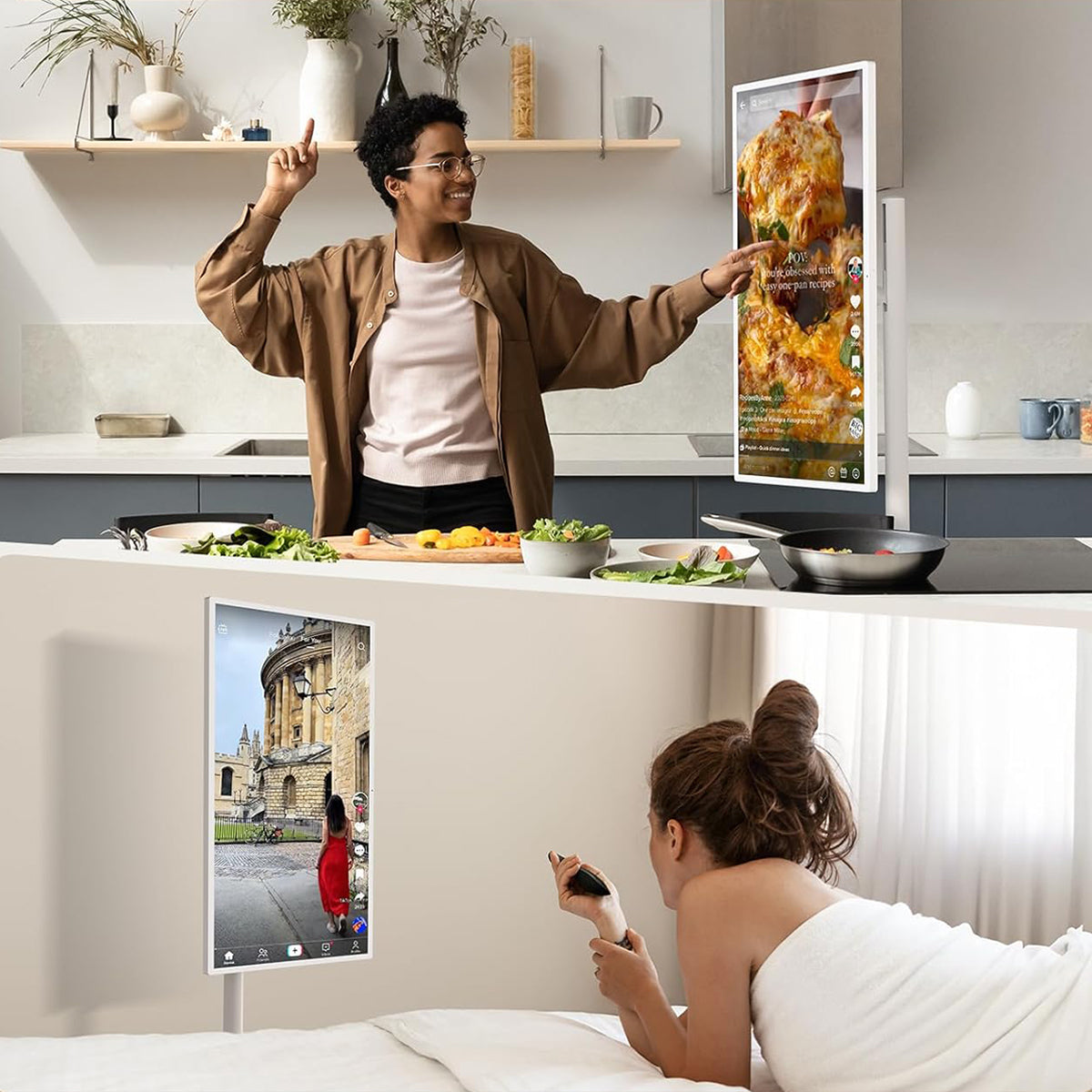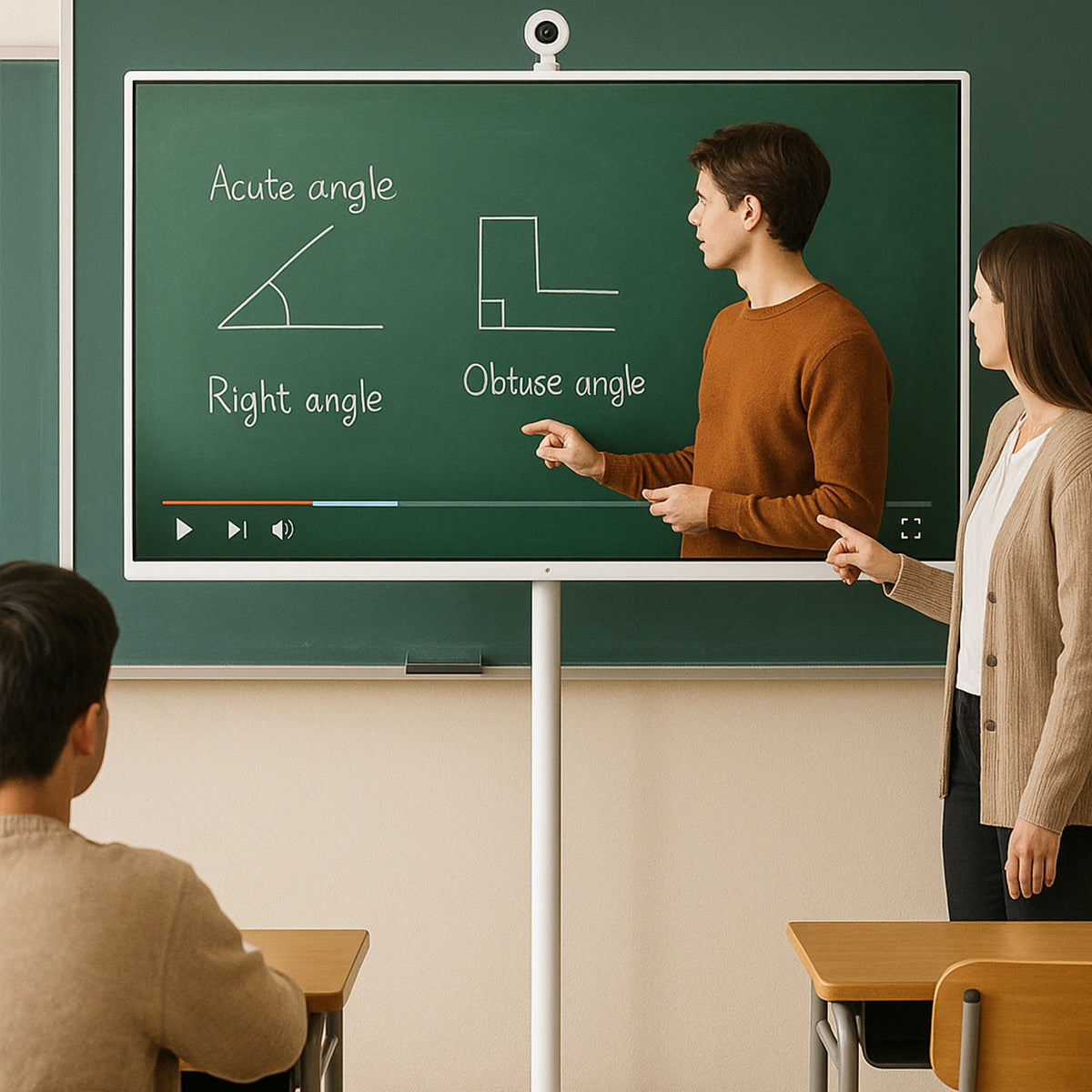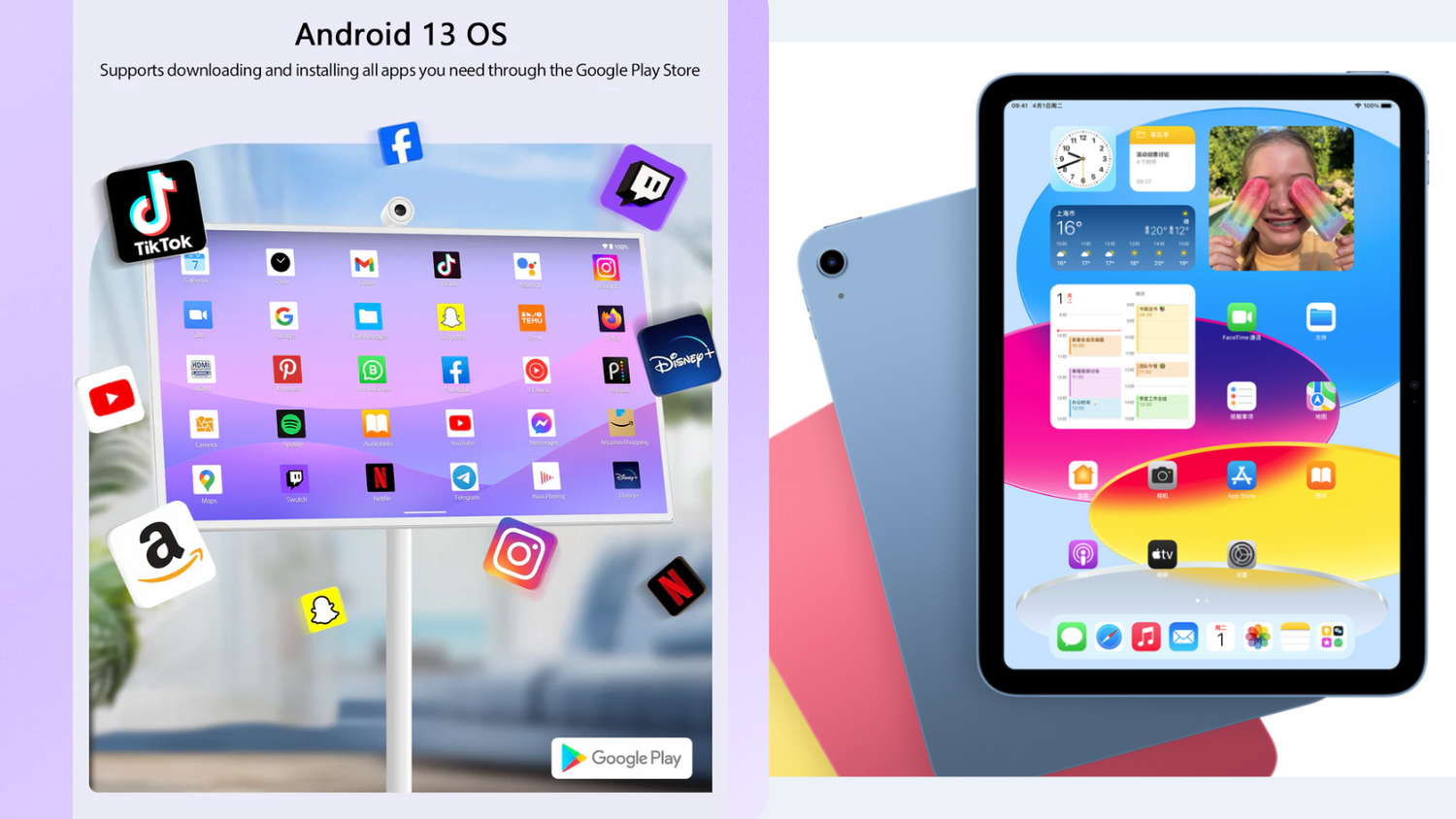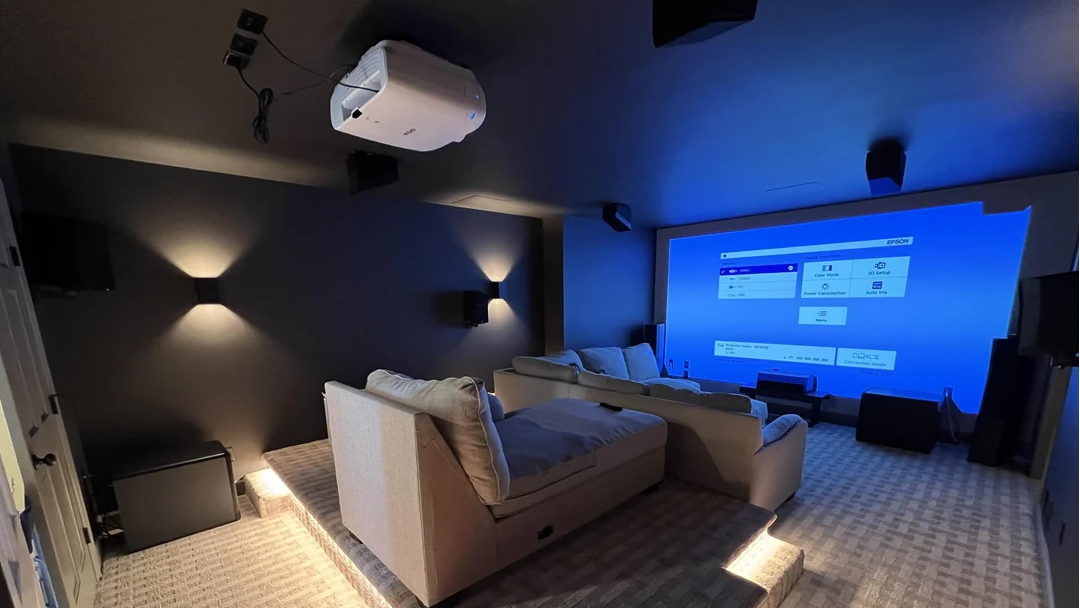Table of Contents
In modern life, electronics have become even more important than daily meals. People can’t go a minute without their phones, and once they’re home, they turn on their iPads to watch videos. But using these devices can come with problems — holding a phone or iPad for too long can make your hands tired, and it’s hard to use them while cooking or working out.
To solve these problems, GFF developed the Portable TV on Wheels, so users can enjoy their devices more freely and comfortably. This article compares traditional electronic devices with GFF’s Portable TV on Wheels to help users see how display technology is evolving.
Modern Lifestyle and Behavior Insights
These days, people’s daily lifestyle is heavily influenced by social media and short videos. Almost everyone is glued to their phone and loves sharing moments of their life on platforms like TikTok and Instagram to get likes and comments.
Besides phones, iPads are also super common. Whether it’s for work or home use, iPads can often replace phones. With a bigger screen and optional keyboard, they’re more convenient for both working and relaxing at home.

Both phones and iPads have become must-haves in modern life because of how portable they are. Today’s lifestyle — especially for Gen Z — is very different from before. Here are a few key ways it stands out:
-
Love to Share
Young people love sharing their daily lives on social media to get attention and likes. Some even become internet influencers because of it. Compared to talking in real life, they prefer to express themselves online through social platforms. -
Creative Vibes Everywhere
The rise of social media, especially TikTok, has inspired young people to be more creative. They make fun short videos or cool photos to get attention — and sometimes even make extra money from it. The internet is more open and accepting, so they feel free to express themselves. With just a phone, they can shoot everything, and then use an iPad to edit and finish their work. -
Instant Gratification
Young people no longer turn to books or newspapers for information — they use social media like a search engine to find answers. That’s why their phone or iPad has become their main source of knowledge.
Whether it’s a phone or an iPad, their small size and powerful features make them must-haves in daily life. But when it comes to using an iPad, what are some common pain points that still need to be solved?
iPad Usage Scenarios and Limitations
People mostly use iPads at home or at work. Unlike phones, iPads are bigger and heavier, so your hands can get tired if you hold them for too long. That’s why most people end up placing them on a desk.
iPad Usage Scenarios
1. Classroom Learning
Compared to the past, today’s classrooms are more tech-focused. Students no longer need to carry heavy textbooks — they can download digital versions in advance. Bringing an iPad to class makes it easy to take notes and quickly look up anything they don’t understand.
2. Creative Work
With an Apple Pencil and pro apps like Procreate or Adobe Fresco, the iPad becomes a powerful mobile drawing tablet. It’s a favorite tool for illustrators and designers. Compared to a phone, the iPad has a bigger screen but is still easy to carry, which makes it super popular among creative professionals.
3. Mobile Work
Even though iPads are great for entertainment, they’re also useful for mobile work. You can use an iPad to check emails, join video meetings, read documents, and add notes. Compared to a laptop, an iPad is more practical because it’s smaller and easy to carry in your everyday bag.
iPad Usage Limitations
Even though the iPad is easy to use, it still has some limitations.
First, while the iPad screen is bigger than a phone, it’s still too small for people who want a larger display. Whether you’re working out or playing games, the screen just isn’t big enough.
Second, even though the iPad is portable, you still have to hold it or place it on a table. For example, it’s not convenient to watch videos while cooking.
Also, the iPad screen is a bit too small for watching movies with others. It’s not great for group viewing, which makes it harder to enjoy fun moments with family or friends.
Core Features and Advantages of the Portable TV on Wheels
To solve these problems, GFF developed and produced the S1 Portable TV on Wheels. Just like its name, this product is portable and comes with wheels, so you can easily move it around. You can think of it as a large-size, movable tablet.

Big Size Tablet
GFF’s Portable TV on Wheels first solves the problem of the iPad’s small screen. With a 32-inch display, it’s about three times bigger than a regular iPad (which is usually 8–13 inches). The large screen makes it much easier to use — whether you're playing workout videos, showing cartoons to kids, or helping them learn basic skills, it’s super convenient.
Portable TV with 5 Wheels
The GFF S1 Portable TV on Wheels comes with 5 silent wheels, so users can easily move it anywhere they want. These wheels are designed to keep the TV stable when it’s standing, so there’s no need to worry about safety while using it.
Besides being easy to move around at home, the wide wheels also make it simple to roll the TV outside for outdoor use.
Rollable Tablet on Wheels
Besides the big screen and easy mobility, GFF’s Portable TV on Wheels also has a very user-friendly design. The screen can rotate and adjust in multiple directions.
Flex every angle with:
Tilt: ±20°
Lift: ±20cm
Swivel: ±45°
Pivot: ±90°
Whether you’re cooking, working out, watching a movie, or playing games, you can adjust the screen to match your height. This rollable tablet is made for everyone — both adults and kids can use it comfortably.
Where to Use A Portable TV on Wheels?
Compared to the iPad, GFF’s Portable TV on Wheels has more use cases and is easier to use. Whether you’re at home or in the office, it can be super useful and make your life more convenient.
Portable TV for Home
Just like the iPad, the most common place to use GFF’s Portable TV on Wheels is at home.

First, you can use it in the kitchen. Cooking can get a little boring, and if the TV is in the living room, you can only hear it, not see it. iPad screens are too small and not easy to watch while cooking. But with a portable TV, that problem is solved. You can adjust it to the right height and angle, and the 32-inch screen makes it super easy to watch while you cook.
If you're working out — like doing yoga or cardio — this screen is also perfect. You can roll it to wherever you’re exercising, and the large screen can be tilted to the perfect angle for your workout.
And for outdoor parties, this portable TV is great for playing music or movies to set the mood. It has a built-in battery, so you can use it wirelessly. Once fully charged, it works for 4–5 hours without needing to plug in. Just connect it to WiFi, and it works like a large tablet.
Wireless Tablet for Business
The GFF 32-inch Portable TV on Wheels isn’t just easy to move — it’s also great for office use. This portable tablet on wheels supports screen casting from a computer, phone, or tablet, making it super easy to share your content during meetings. Everyone in the room can see the big screen clearly.

It also comes with an external 2K HD camera, perfect for video conferencing. With Android 13 OS, you can easily download any apps you need, like Zoom or Google Meet. Using the 32-inch screen for video calls makes everything clearer, helps people stay focused, and makes meetings more efficient.
After a detailed comparison, you can now see the difference between an iPad and GFF Portable TV on Wheels. Both are designed to help you work better and enjoy life more.
The iPad is small and easy to carry, while the Portable TV on Wheels gives you a big screen that’s easy to move around. They don’t compete with each other — in fact, having both can make your life even better. You’ll get the best of both worlds and enjoy the convenience that modern tech brings.





